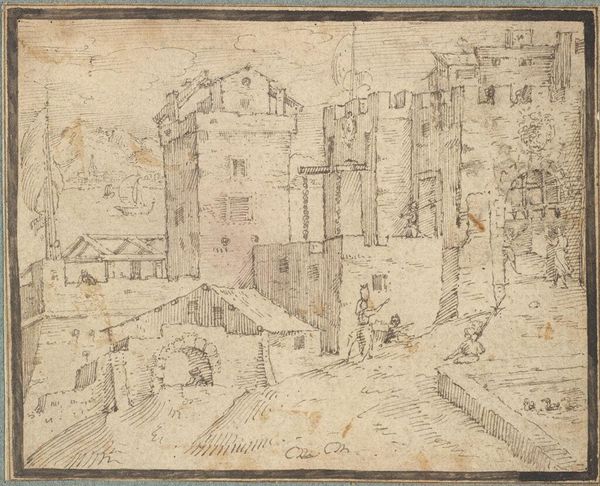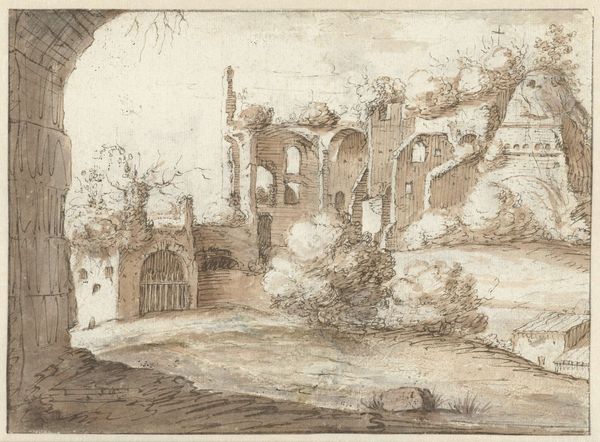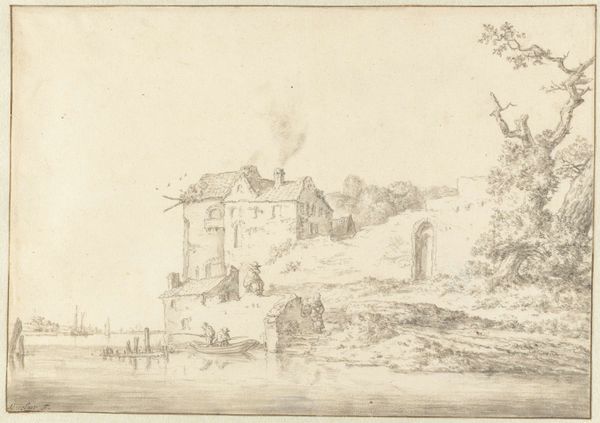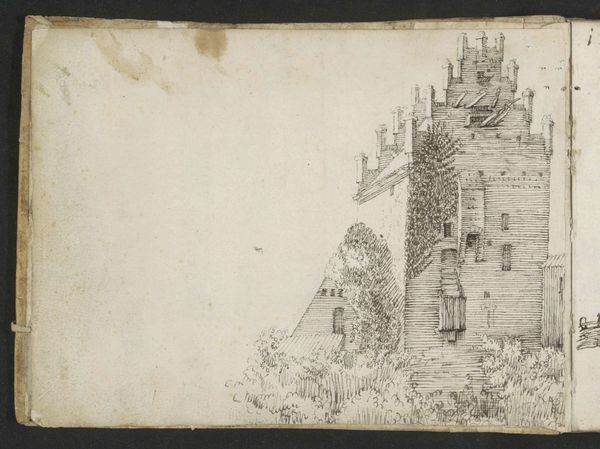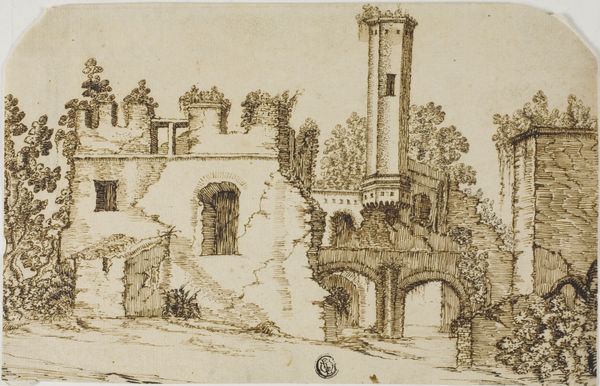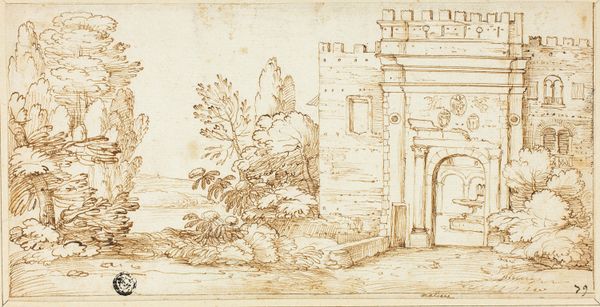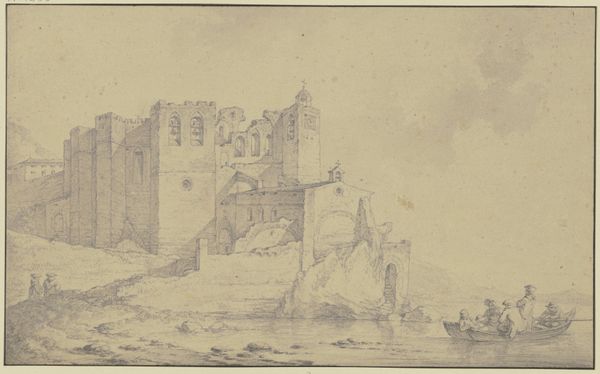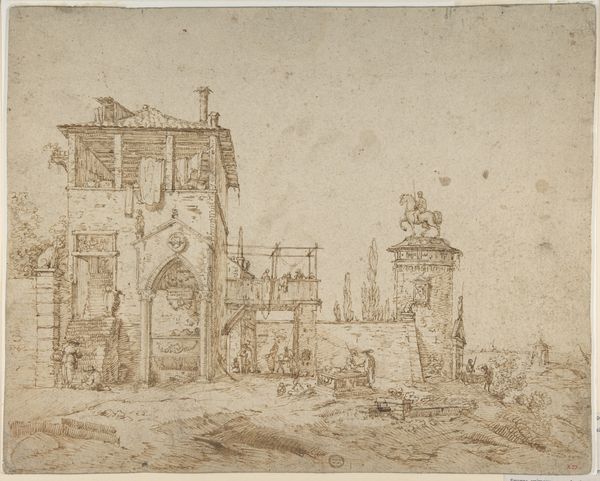
drawing, paper, architecture
#
drawing
#
landscape
#
paper
#
italian-renaissance
#
architecture
Dimensions: 8-11/16 x 13-1/8 in. (22.0 x 33.4 cm)
Copyright: Public Domain
Editor: Here we have "Palazzo Nerone," a pen and ink drawing on paper, dating back to sometime in the 16th century, from an anonymous artist. I'm really drawn to the level of detail in this piece. How would you interpret this drawing? Curator: Immediately, I’m struck by the intricate use of line and space. Notice how the artist employs varying thicknesses to suggest depth and shadow. The delicate hatching technique, particularly in the rendering of the architecture, invites us to explore the formal structure of the scene. Do you observe how the artist divides the composition into distinct planes? Editor: Yes, there's a clear foreground, middle ground, and background. I hadn’t consciously noticed that, but it’s obvious now! The planes are subtle, almost like layers of transparency laid atop each other. Is there a significance to that layering, do you think? Curator: Precisely! It serves to flatten the perspective somewhat, drawing attention to the surface of the drawing itself. Note also the subtle tension between the geometric rigidity of the architectural forms and the organic freedom of the vegetation. This interplay speaks to the core of the drawing’s visual dynamic. What feelings are conjured by these elements in visual dialogue? Editor: The rigidity contrasted with the free-flowing plants does create some tension! It gives me a sense of the artificial versus the natural, or of permanence battling against decay, as if it is crumbling or being reclaimed by nature itself. Curator: Excellent observation. Considering the formal properties, we recognize that Palazzo Nerone isn’t just a depiction of architecture, but a study in texture, line, and spatial relationships. It offers us the pure artistic intentions as seen through a window in time, expressed with artistic precision and clear visual language. Editor: I definitely appreciate the drawing more now that you've pointed out these details. I focused on subject matter when I saw it first. But seeing it from the purely visual standpoint, with lines, shadows, and planes in mind, adds another layer of understanding and helps clarify the drawing's artistry.
Comments
No comments
Be the first to comment and join the conversation on the ultimate creative platform.

